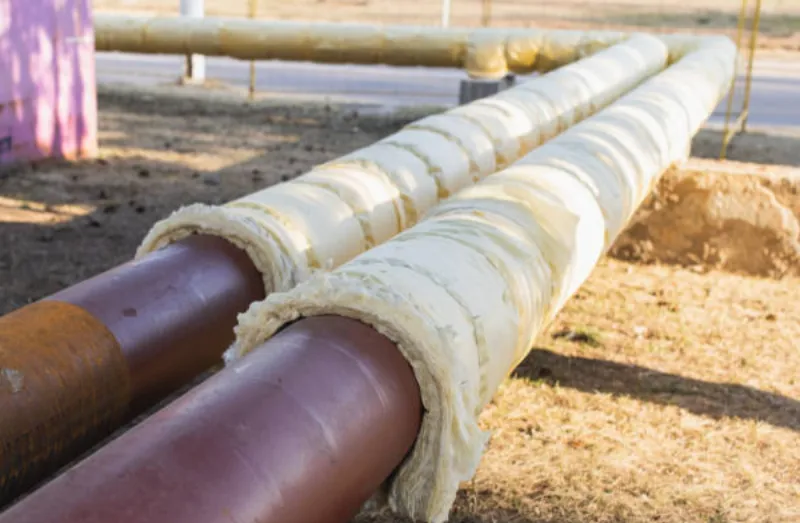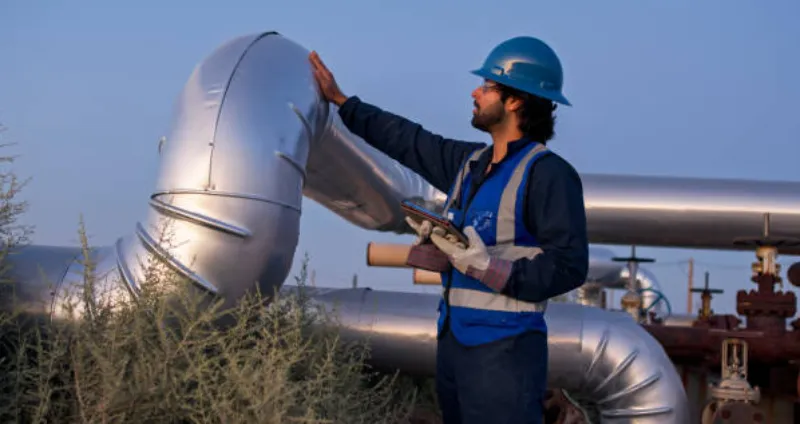Fire-Rated Pipe Insulation Explained
Oil and Gas Pipe Insulation: Challenges, Materials, and Support Solutions

Reliable oil and gas pipe insulation keeps systems running well, helps maintain safety, and supports consistent operation in the tough conditions often found in petroleum production and processing. These pipelines need careful thermal control to keep fluids moving properly and to avoid disruptions. Without the right insulation and structural support, it doesn’t take long before efficiency drops and reliability becomes a problem.
The Role of Thermal Control in Industrial Pipeline Performance
One of the biggest advantages of good insulation is how it helps manage temperature. Whether a pipeline is carrying something hot or cold, insulation protects it from the outside environment, cuts down on energy use, and helps keep the flow steady. This becomes even more important in places like remote oil fields or offshore rigs, where the weather can shift suddenly and stress the entire system.
Safety Hazards and the Value of Insulated Systems
Safety is also a big reason insulation is widely used in oil and gas work. Pipes that are too hot or too cold can be dangerous for anyone working around them—especially in tight spaces or crowded facilities. Adding insulation helps lower surface temperatures, reduces moisture that can lead to slips or rust, and creates a safer work area overall. In high-pressure or unstable environments, every bit of added protection helps.
Choosing the Right Insulation Material for Each Environment
The performance of a pipe insulation system often comes down to using the right material for the job.
- Mineral wool is popular for its ability to handle high heat and cut down on noise, which is helpful in areas with heavy machinery.
- Calcium silicate stays firm and holds its shape well, making it a smart choice for long pipe runs that need solid support.
- Polyurethane foam works best where keeping water out is important, thanks to its tight structure that blocks moisture.
- Aerogel is thin but effective, which makes it ideal in cramped areas like offshore platforms or underwater modules where space is limited but insulation performance still matters.
Even with the best material in place, there are still challenges that can affect how well insulation holds up over time.
Persistent Threats to Insulation Longevity

One of the most common problems is corrosion under insulation. It happens when moisture sneaks in between the insulation and the pipe, usually out of sight. Left alone, this can slowly damage an entire pipeline. Preventing this means using proper vapor barriers, making sure insulation pieces fit well together, and regularly checking for trouble spots by opening sections and looking directly.
On high-temperature systems, even small installation flaws—like mismatched seams or insulation packed too tightly at bends—can trap moisture and speed up corrosion, especially in areas exposed to heating and cooling cycles.
Wear and Movement That Break Down Insulation
Pipes aren’t still. They shift, stretch, and contract because of pressure changes and temperature swings. If the insulation can’t keep up, it starts to split or flatten out, which weakens its ability to do the job.
There’s also vibration to think about. Pumps, compressors, and fast-moving fluids create constant motion. This vibration wears away insulation—often starting in bends or unsupported areas—and can lead to problems both inside and out.
Structural Support Systems That Keep Insulation Intact
That’s where support systems make a difference. Buckaroos creates saddles and supports designed to handle movement and pressure without damaging the insulation. These parts help the insulation keep its shape and stay properly spaced from the pipe, which helps hold in the heat—or keep it out—longer. If insulation is crushed or shifted by pipe weight or poorly placed brackets, it starts losing its ability to perform.
Roundup Plus™ Saddles for Load Distribution
The Roundup Plus™ Saddle is built to prevent insulation from getting flattened where pipes are held up. It uses G-90 galvanized carbon steel and includes high-density insulation inserts that help hold the insulation's shape. This setup avoids heat loss at support points by spreading the weight out and keeping the insulation at full thickness.
CoolDry™ Insulated Pipe Support System
The CoolDry™ System blocks moisture and adds a thermal barrier at support locations, which helps protect systems that operate at cooler temperatures. Its insulation core resists water damage and holds up under pressure, helping it last in both above-ground and buried setups.
Unlike older foam glass materials, which can wear out in freezing and thawing cycles, the CoolDry™ LT System version keeps its thermal value and strength even in very cold settings—like those seen in chilled water lines or liquefied natural gas (LNG) systems.
How Vibration Control Adds Long-Term Value
The support systems also help soften the impact of constant motion. Even slight, repeated movement will slowly wear down insulation. Buckaroos’ designs help limit how much the pipe and insulation can move at support points, which reduces the chance of damage building up over time.
Many of their support products also use moisture-blocking materials to stop water from pooling, which lowers the risk of corrosion under the insulation later on.
Tailored Pipe Supports for Challenging Oilfield Conditions
Different environments place different demands on insulation. A land-based pipeline crossing a dry, hot area won’t face the same conditions as a riser on an offshore platform that’s constantly hit by salt air and moisture. Buckaroos builds custom-fit supports that match these conditions.
This can include:
- Adjusting the size and shape of the saddle
- Changing how the surface makes contact
- Using special thermal barrier materials
Each of these details helps the insulation last longer and perform better under unusual conditions. In large facilities where inspections are hard and shutting down equipment costs time and money, these well-fitted support systems help cut down on maintenance and reduce unexpected fixes.
Why Maintenance and Inspection Strategies Matter

Routine care is just as important as a good installation. Teams should look for signs like insulation pulling apart, getting crushed, or losing its protective coating. Spotting these early can help avoid bigger problems.
Some facility managers track energy use and temperature readings to help spot when insulation might be slipping. Even a small change in performance can be an early warning sign.
When insulation is properly supported and holding its shape, it’s easier to inspect and repair. That means fewer surprises and smoother upkeep.
Backed by Buckaroos: Reliable Support for Pipe Insulation Systems
Long-lasting pipe insulation doesn’t just rely on materials—it needs a support system that keeps everything in place. Buckaroos offer solutions that stop crushing, reduce heat loss at critical points, and help insulation keep doing its job for the long haul. Contact us today for more information.

Carrie Powers
Carrie channels her passion for innovative solutions in the construction industry for Buckaroos. With a deep understanding of Buckaroos' leading insulated pipe support systems and insulation protection shields, Carrie ensures that building owners, engineers, and installers are well-equipped with the best tools and products. Her dedication to digital transformation and customer engagement helps Buckaroos maintain its reputation as a trusted resource for professional insulators across North America and Canada.
Featured articles
Industrial Pipe Hangers and Supports
Steam Pipe Insulation 101: Materials and Supports
8 Types of Pipe Supports and Their Features
Understanding Industrial Pipe Insulation and the Options




